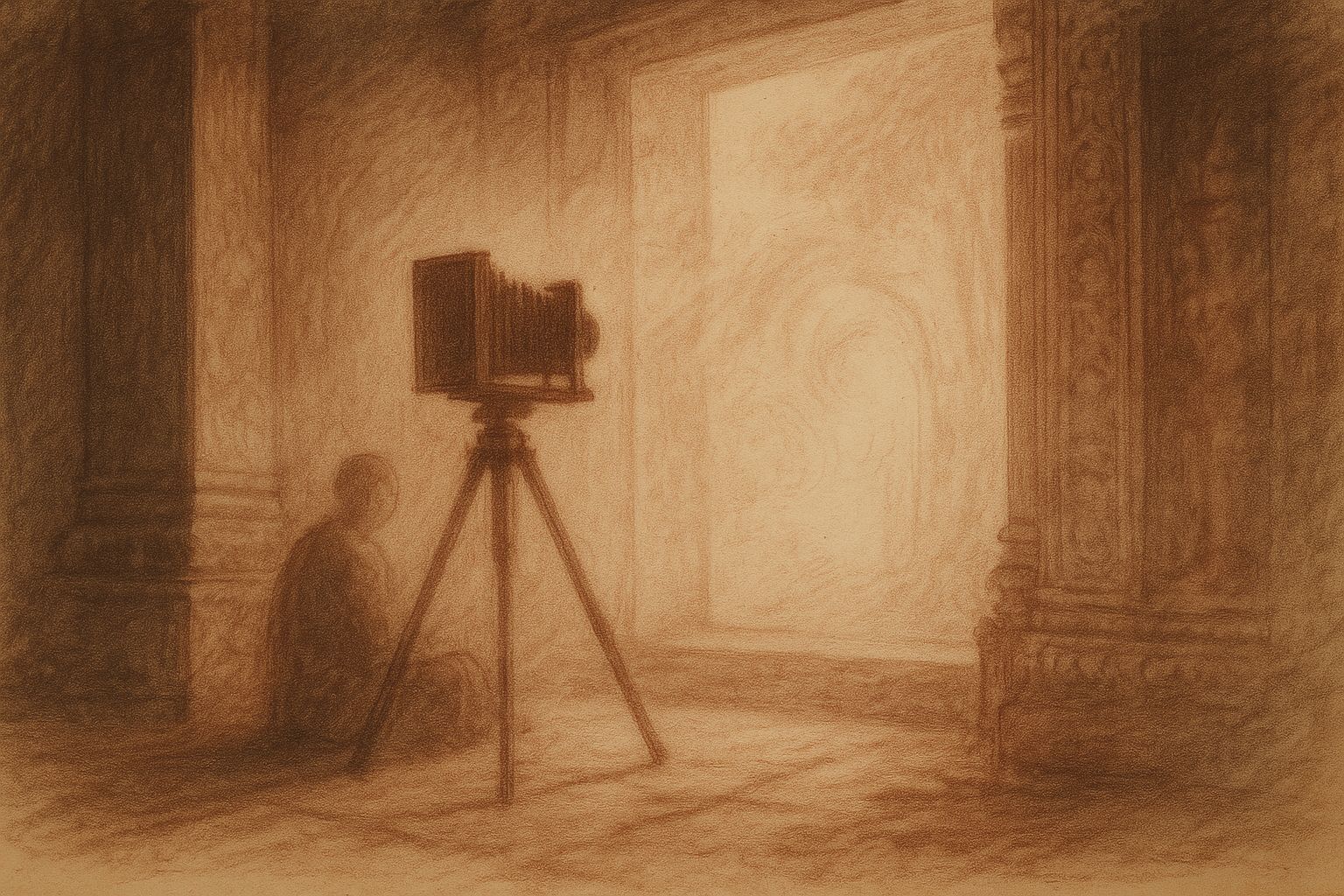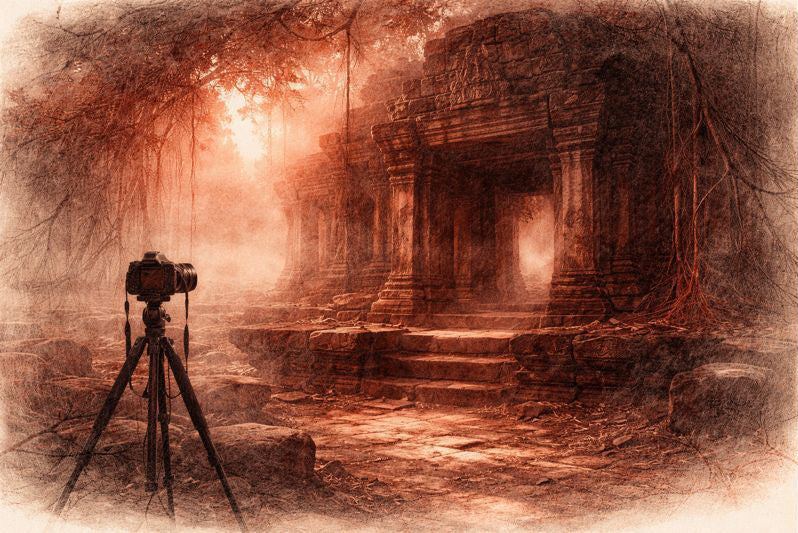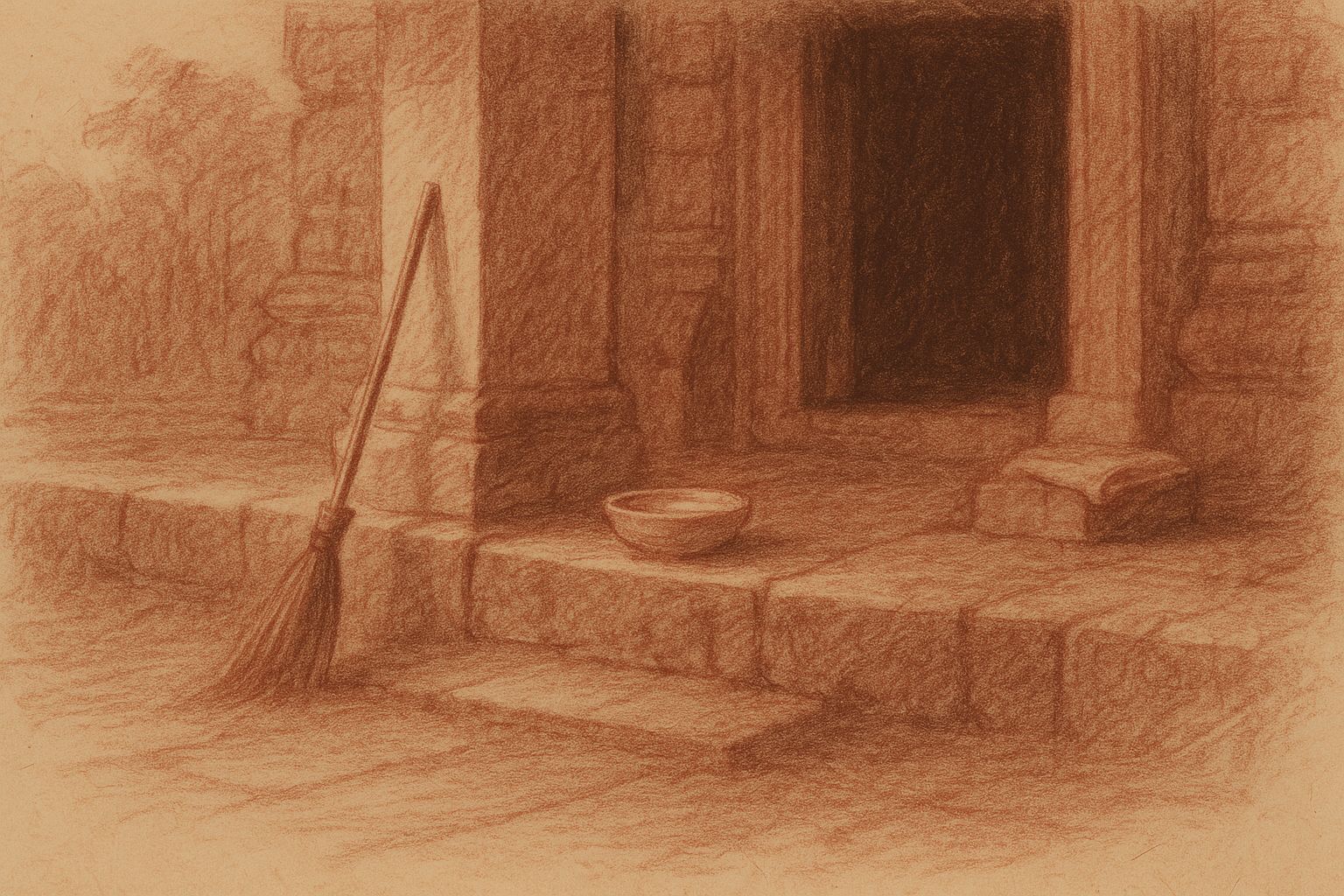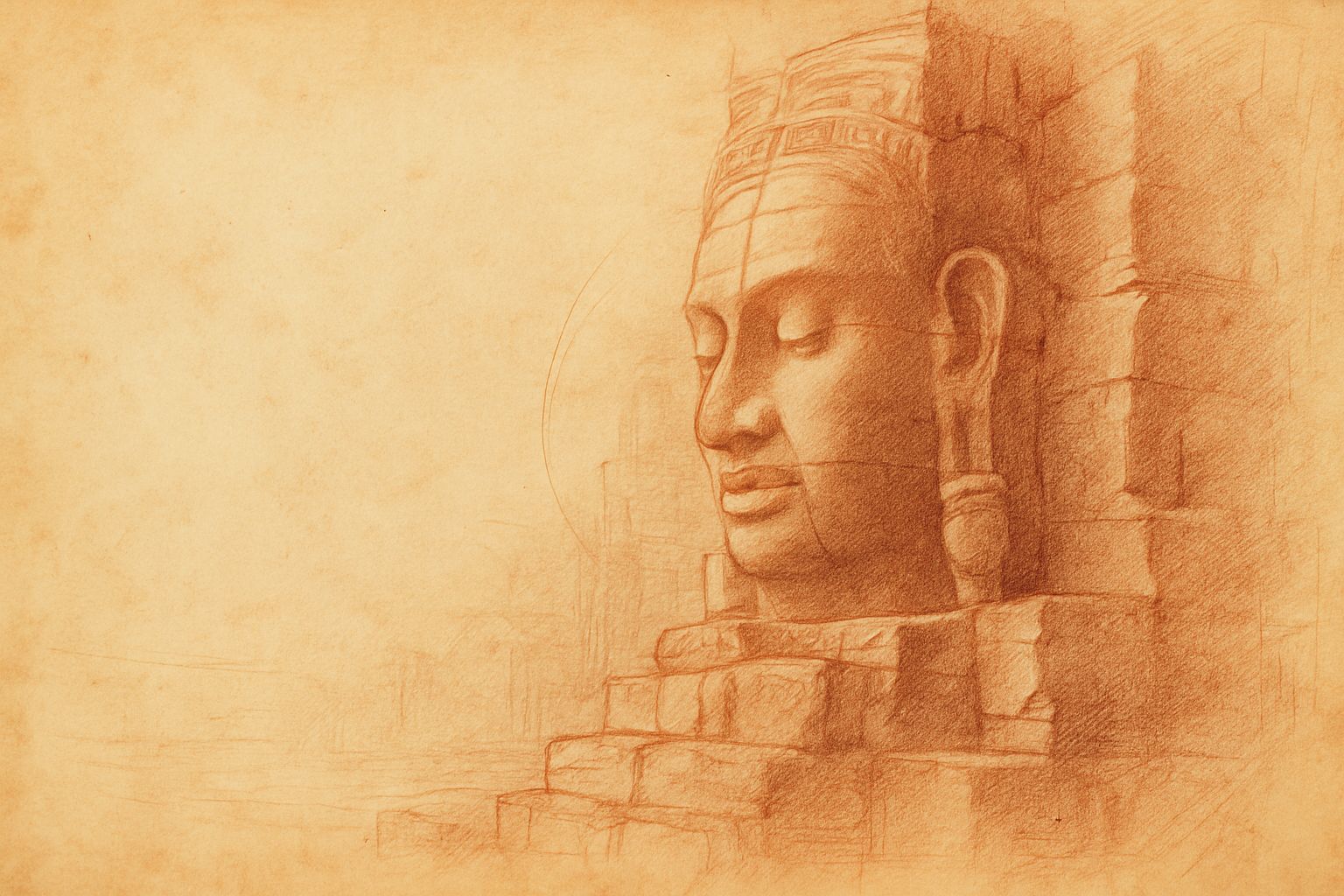Complimentary worldwide shipping on orders over $400 · No import tariffs for most countries
Complimentary worldwide shipping on orders over $400 · No import tariffs for most countries

The Weight of Light
on long exposure and surrender
There are mornings when first light feels heavier than stone.
It presses against the skin like slow water, the world still unchosen between dark and day. I stand before the temple, tripod settled, lens open to that weight, waiting for the unveiling of air.
The longer I work here, the less the camera feels like control. It becomes a vessel of waiting. Each long exposure is a dialogue between breath and time — the stretched silence where intention dissolves. To leave the shutter open for minutes, sometimes hours, is to accept that what arrives will not belong to me.
Light, in these ruins, does not reveal; it returns. It slips through cracks in laterite, grazes reliefs, lies across dust like thought half-formed. The exposure does not capture it — it listens as it passes. In that duration, every sound grows luminous: the chant of cicadas, the fall of a single leaf, the pulse steadying in my wrist.
Patience becomes prayer. Each exposure feels like kneeling — not in worship of the temple, but in reverence for what cannot be seen until one stops seeking. The negative that later emerges carries the residue of trust: faith in the unseen interval when nothing seems to happen and yet everything changes.
To wait is to let the world complete the image for you.
There is humility in that surrender. Dust may drift across the frame, a breeze may tremble leaves, a stray cloud erase the sun. The longer the shutter remains open, the more life intrudes. Control yields to belonging. The photograph becomes not a record of a moment but a testament of devotion — a collaboration between stillness and time.
When I study the negative in the darkroom, I sense its cost. Each softened contour, each veil of motion, carries the echo of those minutes when I was no longer certain whether I was witnessing the temple or being witnessed by it.
Long exposure alters perception: the visible proves only the skin of duration. Beneath it moves a slow tide — light gathering, fading, returning. Waiting grants entry to that hidden rhythm. The ancient builders knew: every sanctuary aligned to the sun’s cycle, every carving shaped so that shadow might finish the work. They too trusted the patience of light.
To surrender in art is to become porous. In those hours of stillness, the edges of self loosen; thought quiets; will withdraws. The eye ceases to measure and begins to receive. What appears on film is not the architecture of Angkor alone, but the architecture of attention — awareness bending under the gravity of light.
There is no haste in this labour. The photograph is born from the same rhythm that formed these stones: offering and return. Light arrives, dwells, departs; the temple breathes it in and releases it. So must I. When the exposure ends, there is a small sound — the shutter closing, the heartbeat resuming — and something invisible has changed.
The lesson of long exposure is not endurance but yielding. One learns to trust the world to finish what one begins. To wait is to consent to mystery — to believe that what remains unseen still shapes the image.
As the day brightens and shadows harden, I gather the camera and walk away. The weight of light lifts; the air moves freely again. Yet something in me remains suspended — that fraction of silence between opening and closing, between seeing and knowing — where all creation begins.
The photograph, when it appears, carries this stillness like a pulse sealed in silver. It is not proof of what was seen, but the trace of surrender.
Also in Library

Before the Shutter Falls
3 min read
Before the shutter falls, fear sharpens and doubt measures the cost of waiting. In the quiet hours before dawn, the act of not-yet-beginning becomes a discipline of attention. This essay reflects on patience, restraint, and the quiet mercy that arrives when outcome loosens its hold.

Those Who Keep the Way Open — On the Quiet Guardians of Angkor’s Thresholds
3 min read
Quiet gestures shape the way into Angkor — a swept stone, a refilled bowl, a hand steadying a guardian lion. This essay reflects on the unseen custodians whose daily care keeps the thresholds open, revealing how sacredness endures not through stone alone, but through those who tend its meaning.

Multiplicity and Mercy — The Face Towers of Jayavarman VII
5 min read
A new vision of kingship rises at the Bayon: serene faces turned to every horizon, shaping a world where authority is expressed as care. Moving through the terraces, one enters a field of steady, compassionate presence — a landscape where stone, light, and time teach through quiet attention.
Join My Studio Journal
Receive occasional letters from my studio in Siem Reap—offering a glimpse into my creative process, early access to new fine art prints, field notes from the temples of Angkor, exhibition announcements, and reflections on beauty, impermanence, and the spirit of place.
No noise. No clutter. Just quiet inspiration, delivered gently.
Subscribe and stay connected to the unfolding story.

Join My Studio Journal
Receive occasional letters from my studio in Siem Reap—offering a glimpse into my creative process, early access to new fine art prints, field notes from the temples of Angkor, exhibition announcements, and reflections on beauty, impermanence, and the spirit of place.
No noise. No clutter. Just quiet inspiration, delivered gently.
Subscribe and stay connected to the unfolding story.
